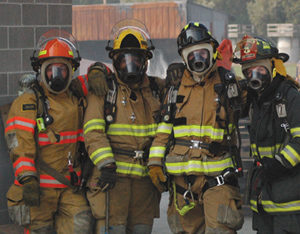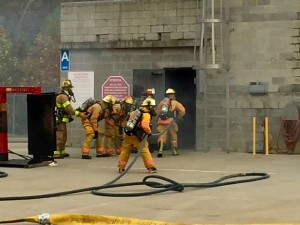By: Robert Avsec, Executive Fire Officer
So, I can across this informative and thought-provoking post from Eric Saylors the other day over on LinkedIn, Fire departments are response models, not production models. If you’re a fire service leader, especially if you’re the fire chief in your community, this is something you must read. More importantly, it’s something you should sit down and discuss with your community’s fire protection stakeholders.
chief in your community, this is something you must read. More importantly, it’s something you should sit down and discuss with your community’s fire protection stakeholders.
Imagine for a moment if the president of the U.S. announced to the public, “Since the land mass of the U.S. has not been directly attacked by a foreign army since the War of 1812, I’m proposing that the budget for the U.S. Army be cut by a third and that our standing army be reduced by 50 percent.”
Hard to image today, right? But, if you check your U.S. history, you’ll find that this reduction of force was the standard operating procedure for our military forces prior to our entry into the Vietnam War. Following the conclusion of hostilities in all previous wars, the U.S. military forces were always severely trimmed down to pre-war levels.
That practice was driven by the fears of the Founding Fathers who were extremely wary of having a large standing army on U.S. soil, having seen what that historically meant in Europe where the ruling governments often used their military for their own purposes (Gosh, where have I seen that recently? Iraq 2003 anyone?).
Fire department reductions in force
While it may be unfathomable to see that happening today, we are seeing it across the U.S. when it comes to fire department budgets and staffing. Those budgets are slashed, staffing is reduced, and fire stations closed because, “We don’t have as many fires as we did in the past.” In response, many fire departments have taken on more working responsibilities, i.e., “diversified”, such as EMS, hazardous materials response, and technical rescue. Often with reduced staffing and budgetary support to meet the mandates of their local governmental leaders to “Do more with less.” (If you skipped over reading Eric Saylors’ article using the link above, now would be an appropriate time to do that).
The “wolves at the door” aren’t going away
While the number of fires may have declined in many communities, there are still a host of “wolves at the door,”  any of which can quickly challenge—and in many cases overwhelm—a local fire department’s ability to respond safely, effectively, and efficiently. Some of these “wolves” are:
any of which can quickly challenge—and in many cases overwhelm—a local fire department’s ability to respond safely, effectively, and efficiently. Some of these “wolves” are:
- Modern residential construction that creates single-family and multi-family dwellings that burn faster and hotter than legacy dwellings and yet are not protected by residential fire sprinkler systems.
- Commercial and industrial occupancies that present a greater risk of fire because of reductions in property maintenance that is covered under new house and land packages—especially the inspection, maintenance, and testing (IMT) for fire protection systems—because management is cutting those budgets to cut costs and increase shareholder profits (The driving force in many businesses today in the U.S.).
- Reductions in fire department staffing for fire prevention code enforcement means that many fire departments have no idea if those IMT functions are taking place in their communities (See “The Ghost Ship” fire in Oakland (Calif.) and the nursing home fire in West Chester (Pa.) for some recent examples).
- Increasing numbers of natural and man-made disasters that severely challenge under-staffed fire departments. (Take one example, how many communities across the U.S have experienced “1000-year floods” in the past couple of years?). I’m a firm believer in the “Law of Unintended Consequences”, so I also believe that over-development in many communities has significantly decreased the ability of the land to absorb and process heavy rainfall. I also believe that climate change is resulting in more frequent and more severe rainfall events. Not a good combination.
- Training and education for new and incumbent fire department members is another aspect of local fire protection that’s among those fire department functions that “take a hit” during budget reductions. And at a time when many career fire departments are experiencing significant turnovers in their staff due to retirements leaving newly promoted officers who lack the sufficient knowledge, skills, and experience to do their job safely, effectively, and efficiently.
I don’t have the answers. but one thing I’m fairly sure of is that if more fire chiefs and their local community stakeholders could sit down and begin having a conversation using this post as a starting point. As a responder to one of my other posts wrote recently, “I hope the “ripples” you’re causing will turn into “tidal waves.”
 Fire & EMS Leader Pro The job of old firefighters is to teach young firefighters how to become old firefighters!
Fire & EMS Leader Pro The job of old firefighters is to teach young firefighters how to become old firefighters!